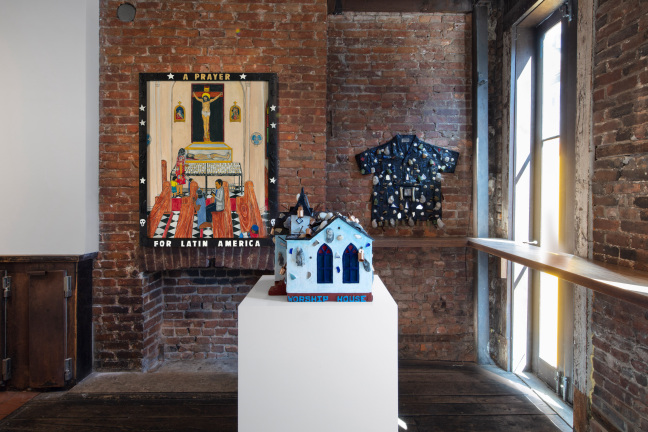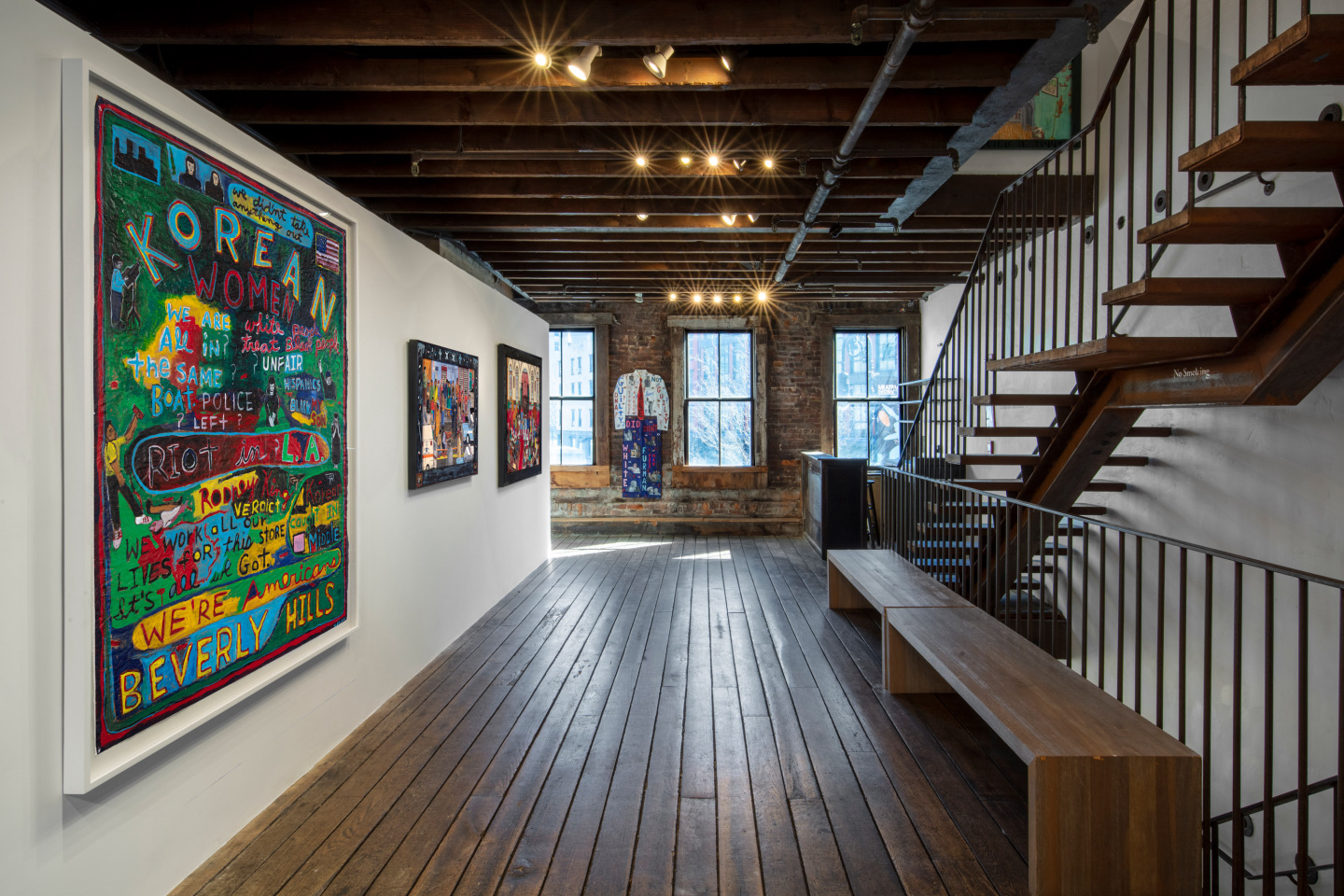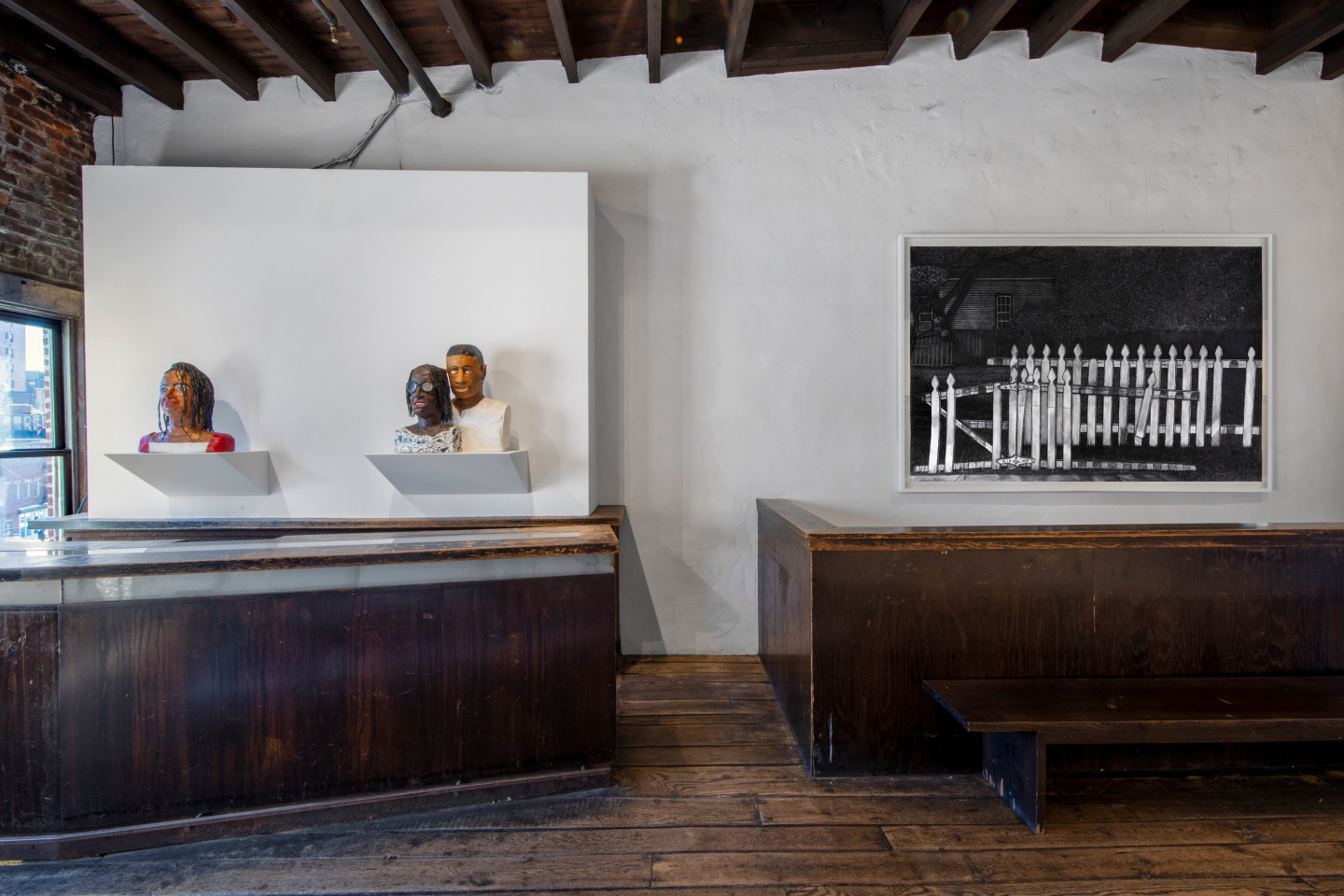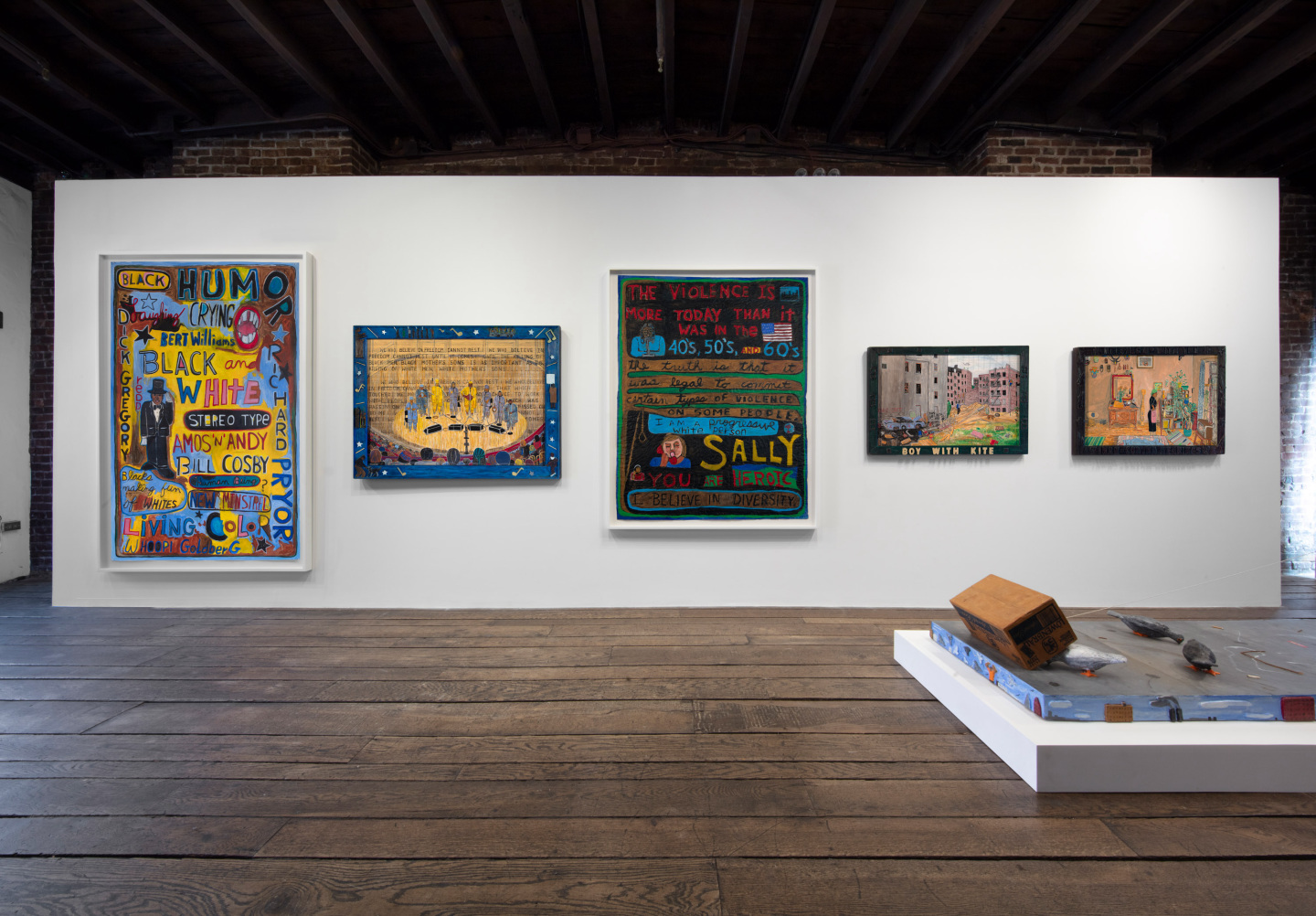Willie Birch speaks as frankly as his artwork does. He isn’t afraid to tell it as it is. “My work is didactic; it’s instructive,” he says as we sit together on the third floor of Fort Gansevoort in New York. Birch, whose figurative painting and sculpture brims with play and excess, has always been a bit of a renegade. Over the course of his 50-plus-year career, he has remained committed to realism, eschewing the commercial art world’s trend towards abstraction and conceptualism. And though figuration itself generally favors painting on canvas, he works exclusively with paper.
Birch isn’t interested in the art world. Rather, his work is animated by the presence of his own world, the immediacy of his own experiences. For the artist, it boils down to a straightforward conviction: “The best art is motivated by what’s around you.”

Titled “Chronicling Our Lives: 1987 to 2021,” Birch’s new solo exhibition at the gallery does exactly as it is says. It is a gesture in storytelling that covers more than three decades of the artist’s career, traversing sculpture, painting and drawing. Within the various media he makes use of, the artist often works in series that directly respond to his physical and social environment. For example, in the mid 1990s, Birch developed his “Dialogue” series, in which he sourced language from media including radio, television and newspapers to weave intricate narrative-based paintings of life in New York.
Birch and I spoke at the gallery on a Friday, the day after the show opening. He told me he was headed back to his hometown, New Orleans, on Sunday. He couldn’t stay away for too long. Though Birch has lived elsewhere during his career—he spent several years in New York where he became an artist resident at the Studio Museum in 1978—he’s always felt called back home. His artwork is totally enveloped in this love for the place he grew up. For Birch, this is a matter of feeling rooted in the Black cultural traditions and histories that have converged in and emerged from New Orleans. “It’s incumbent to me to understand that I owe something to my ancestors,” says Birch. “My work is loaded with them.”




The work at Fort Gansevoort is energized by this sense of history. Sweet Honey in the Rock (1987-89) for example, meditates on the overlapping histories of Black music and freedom struggles. Meanwhile, works like Cherokee (Indian Nation), 1994, are crowded with isolated words and fractured phrases that manage to tell a cohesive history of American violence and displacement: “run away slaves,” “trail of tears,” “native blood.”
Even in its sheer materiality, Birch’s artwork is a historical testimony. He has almost always worked with paper, a medium he describes as an interlocutor between his own practice and that of other Black artists, from Ancient Egyptians working on papyrus to 20th-century artists like Charles White and Elizabeth Catlett. “When you look at the history of African American art, you see a lot of artists working with paper. It’s just been more accessible to us,” Birch highlights. “I wanted to latch onto that tradition.” The work on view at Fort Gansevoort is resplendent with papier-mâché sculptures and frames, as well as two-dimensional works on paper of various textures and weights. In them, we witness Birch simultaneously revel in the historical traditions of paper and harness its multiple, expansive possibilities towards an artistic vocabulary that is distinctly his own.
Though Birch’s work is deeply in tune with the past, it is thoroughly guided by a sense of history as living with and around him. It is an articulation of history as kinship. When Birch returned to New Orleans in 1994, he was immediately called to portraiture. “I’d stop someone in the street and say ‘Hey man, you’re beautiful! Can I do your portrait? And then I’d just invite them to my studio,” Birch recalls. While portraits were not necessarily the focus of the Fort Gansevoort show, it affords us a clear sense of the attitude that has informed Birch’s commitment to portraiture: a deep investment in and care for people and places that texture his environment. In every layer of material, every detail of the brush, Birch’s works are saturated with the relations—both living and ancestral—that have made them possible.










 in your life?
in your life?

